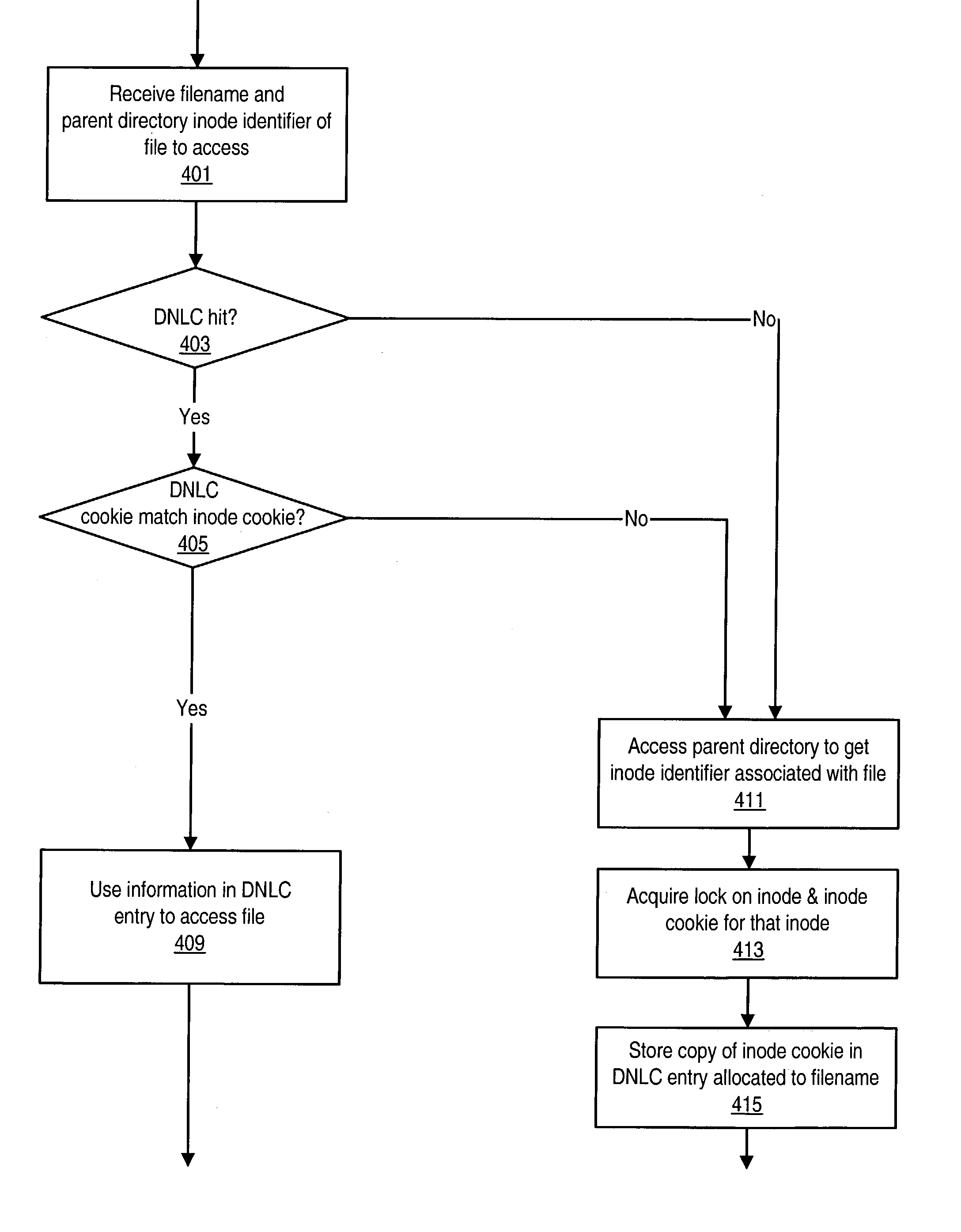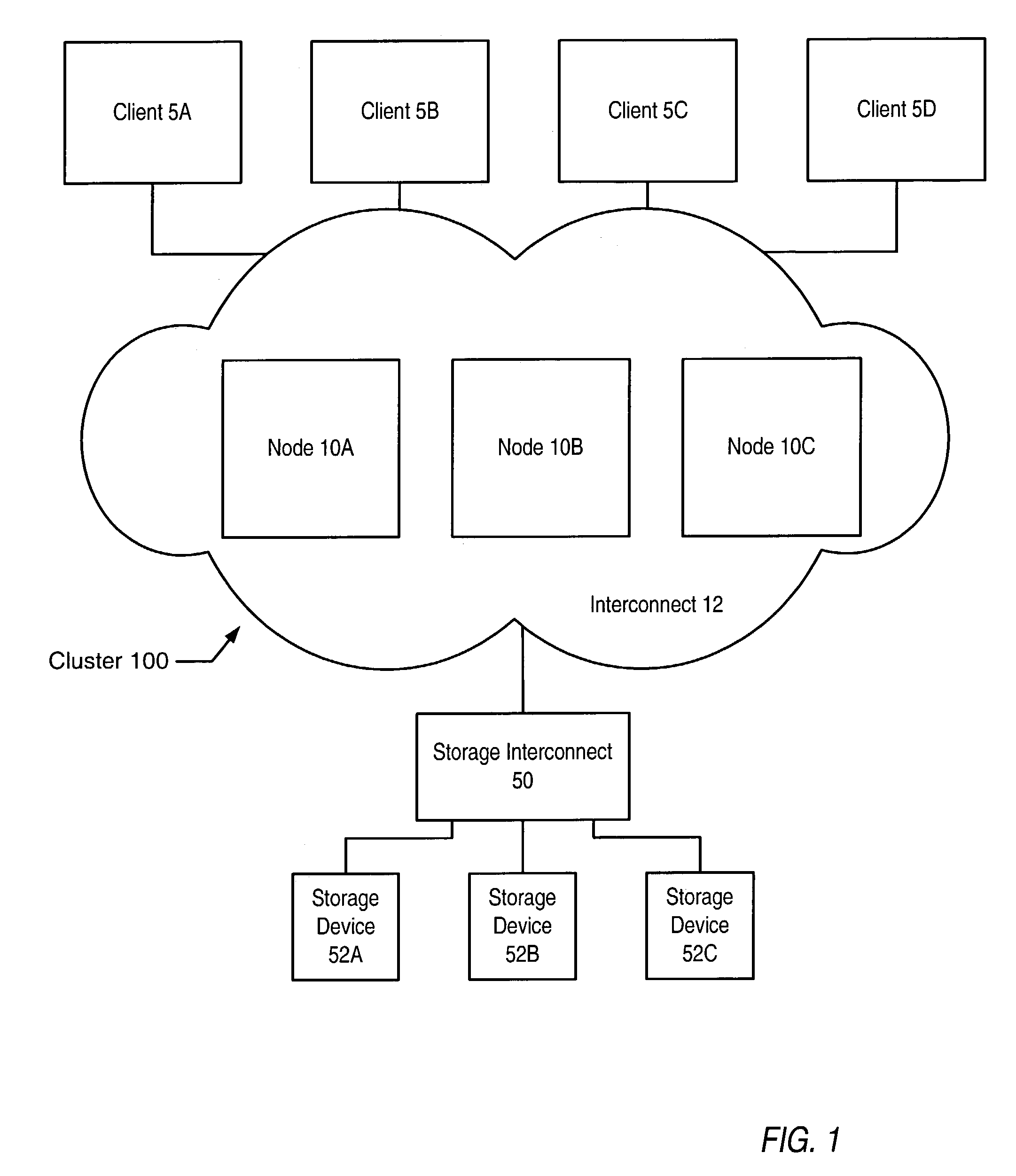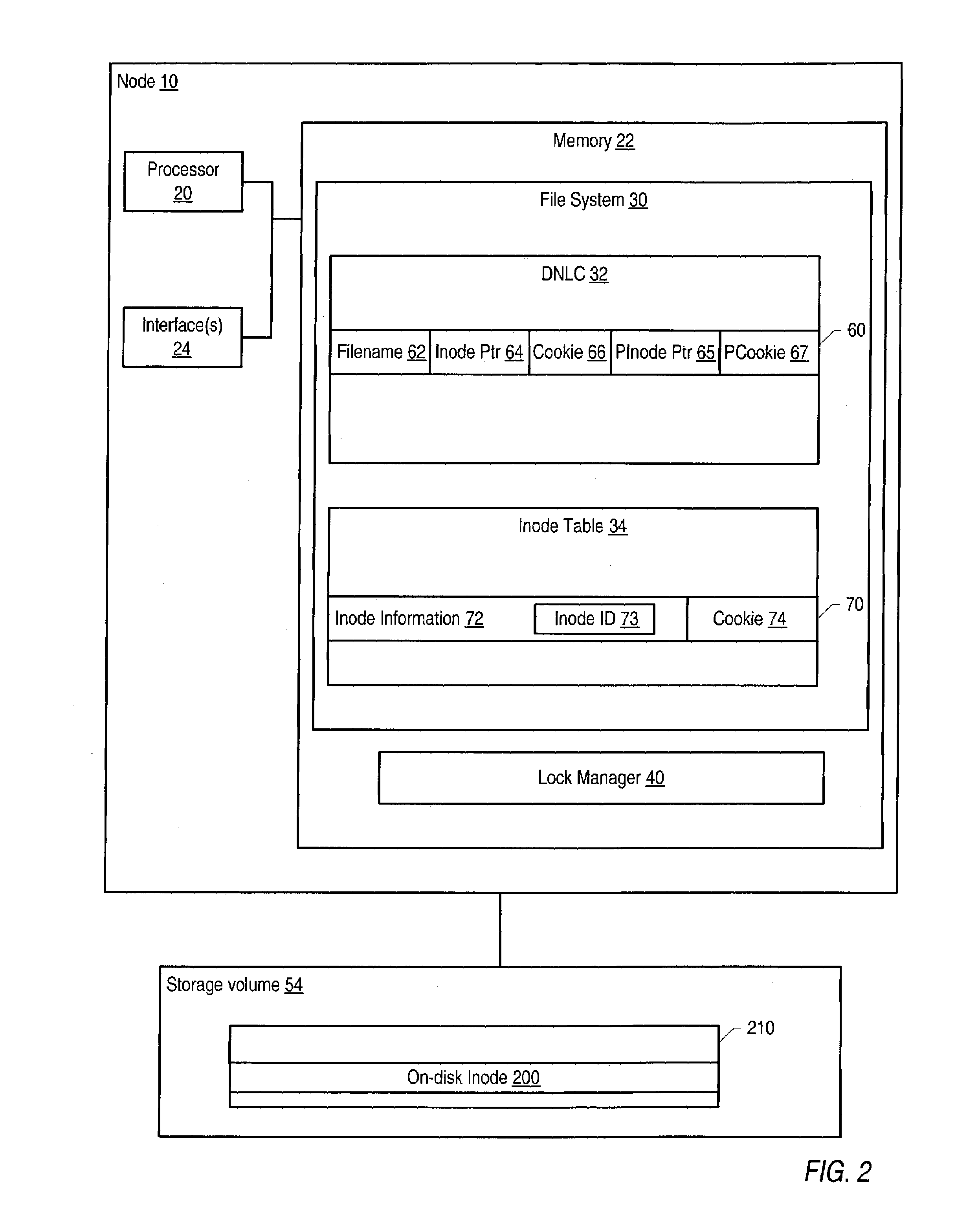Cookie-based directory name lookup cache for a cluster file system
a file system and directory name lookup technology, applied in the field of computer systems, can solve the problems of cache coherence, cache information, and inability to access a significant amount of time,
- Summary
- Abstract
- Description
- Claims
- Application Information
AI Technical Summary
Problems solved by technology
Method used
Image
Examples
Embodiment Construction
[0020]FIG. 1 shows a block diagram of a clustered computing system, according to one embodiment. Client devices 5A–5D (collectively, clients 5) are coupled to communicate with cluster 100. Clients 5 may be connected to cluster 100 via a network such as a local area network (LAN) or a wide area network (WAN) such as the Internet. Cluster 100 includes nodes 10A–10C that are coupled by an interconnect 12. As used herein, a “node” may be a stand-alone computer, server, or other computing device, as well as a virtual machine, thread, process, or combination of such elements. Nodes 10 may process requests from clients 5. Interconnect 12 may include various communication links (e.g., electrical, fiber optic, and / or wireless links) that couple nodes 10. Nodes 10 may be configured to provide high availability, fail-over, load-balancing, and / or scalability (e.g., by supporting the dynamic addition and / or removal of nodes) within cluster 100. Interconnect 12 may include a LAN or WAN or a combi...
PUM
 Login to View More
Login to View More Abstract
Description
Claims
Application Information
 Login to View More
Login to View More - R&D
- Intellectual Property
- Life Sciences
- Materials
- Tech Scout
- Unparalleled Data Quality
- Higher Quality Content
- 60% Fewer Hallucinations
Browse by: Latest US Patents, China's latest patents, Technical Efficacy Thesaurus, Application Domain, Technology Topic, Popular Technical Reports.
© 2025 PatSnap. All rights reserved.Legal|Privacy policy|Modern Slavery Act Transparency Statement|Sitemap|About US| Contact US: help@patsnap.com



